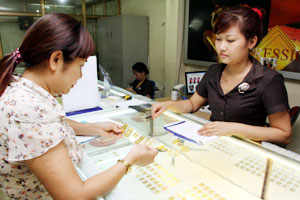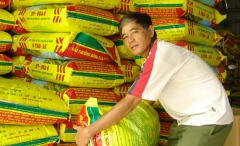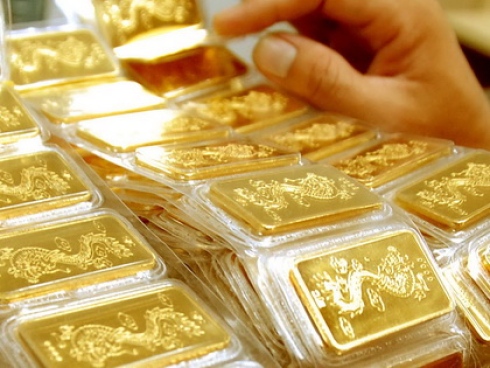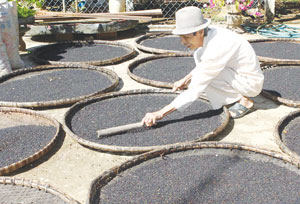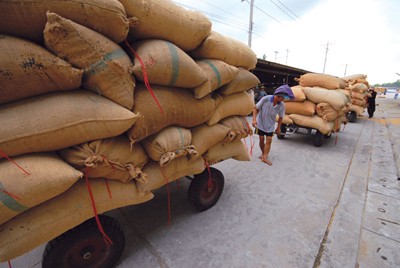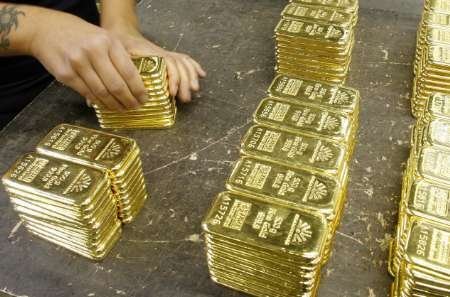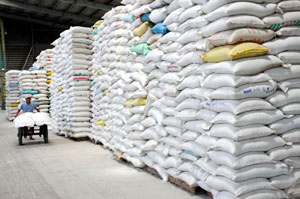Gold processors seek to export surplus
Gold processors seek to export surplus
Gold-production enterprises have asked the central bank to allow them to export non-SJC gold and import solid gold to manufacture SJC gold to ensure an immediate supply for the market.
If this was done, it would contribute to reducing the price differential between domestic and global markets, thus limiting losses for people and credit institutions, while not affecting the country's foreign currency resources, according to the enterprises.
Earlier, the HCM City People's Committee made a similar proposal to the central bank's consideration.
Currently, there is a wide gap between domestic and global gold prices, created after the central bank decided to be the only producer of gold bullion, choosing SJC as the national brand.
The decision has caused a scarcity of SJC-gold bullion on the market, making prices rise sharply.
Since then, the central bank has several times allowed bent and buckled SJC gold bars and non-SJC gold bars that still meet other standards of quality and weight to be exchanged for SJC bars for a nominal fee of VND50,000.
But several problems have arisen from this conversion process, which has become slow. People continue to suffer losses from high gold prices.
One of the problems is the quality of non-SJC gold bullion.
The Sai Gon Jewelery Company (SJC), which was allowed by the central bank to convert gold bars of other brands into SJC bullion, found that many non-SJC gold bars did not meet standards of quality and weight for converting SJC-gold. So, they then were given back to the owners.
SJC general director Do Cong Chinh said the percentage of non-SJC gold of lower quality accounted for around 10 per cent.
However, some non-SJC gold lots that contain low-quality bars make up between 55 and 57 per cent, Chinh told Nguoi Lao Dong (The Labourer) newspaper.
Owners of some non-SJC gold brands disagreed with this assessment, saying that the SJC's gold testing machines were too old.
The director of a non-SJC gold brand, who declined to be named, said that since SJC was holding the largest share of the market, gold bars with other brands must be produced with the best standards in order to compete with the SJC gold.
He said they had no reason to produce poor-quality gold bullion.
He also said the gold was high quality because his company's machines used to make gold bars had been imported and use new technology.
According to Tran Thu Anh, deputy director of SJC's Tan Thuan Jewellery Plant, SJC's gold testing machines are highly precise and made by the Da Lat Nuclear Research Institute.
SJC director Chinh also said that the testing of gold quality was supervised by the central bank around the clock.
In the face of such a controversy, an official of the central bank said that the request from companies to allow enterprises to temporarily export gold bars and import solid gold for producing SJC-gold bars would likely be approved.
Gold processors seek to export surplus
HCM CITY (VNS) — Gold-production enterprises have asked the central bank to allow them to export non-SJC gold and import solid gold to manufacture SJC gold to ensure an immediate supply for the market.
If this was done, it would contribute to reducing the price differential between domestic and global markets, thus limiting losses for people and credit institutions, while not affecting the country's foreign currency resources, according to the enterprises.
Earlier, the HCM City People's Committee made a similar proposal to the central bank's consideration.
Currently, there is a wide gap between domestic and global gold prices, created after the central bank decided to be the only producer of gold bullion, choosing SJC as the national brand.
The decision has caused a scarcity of SJC-gold bullion on the market, making prices rise sharply.
Since then, the central bank has several times allowed bent and buckled SJC gold bars and non-SJC gold bars that still meet other standards of quality and weight to be exchanged for SJC bars for a nominal fee of VND50,000.
But several problems have arisen from this conversion process, which has become slow. People continue to suffer losses from high gold prices.
One of the problems is the quality of non-SJC gold bullion.
The Sai Gon Jewelery Company (SJC), which was allowed by the central bank to convert gold bars of other brands into SJC bullion, found that many non-SJC gold bars did not meet standards of quality and weight for converting SJC-gold. So, they then were given back to the owners.
SJC general director Do Cong Chinh said the percentage of non-SJC gold of lower quality accounted for around 10 per cent.
However, some non-SJC gold lots that contain low-quality bars make up between 55 and 57 per cent, Chinh told Nguoi Lao Dong (The Labourer) newspaper.
Owners of some non-SJC gold brands disagreed with this assessment, saying that the SJC's gold testing machines were too old.
The director of a non-SJC gold brand, who declined to be named, said that since SJC was holding the largest share of the market, gold bars with other brands must be produced with the best standards in order to compete with the SJC gold.
He said they had no reason to produce poor-quality gold bullion.
He also said the gold was high quality because his company's machines used to make gold bars had been imported and use new technology.
According to Tran Thu Anh, deputy director of SJC's Tan Thuan Jewellery Plant, SJC's gold testing machines are highly precise and made by the Da Lat Nuclear Research Institute.
SJC director Chinh also said that the testing of gold quality was supervised by the central bank around the clock.
In the face of such a controversy, an official of the central bank said that the request from companies to allow enterprises to temporarily export gold bars and import solid gold for producing SJC-gold bars would likely be approved.
vietnamnews










